Getting to Grips with COSHH: Managing safety from Practical Departments to the Caretaker's Cupboard

This blog is based on Judicium’s Health and Safety ‘Sofa Session’ from 18th June, led by resident expert, Mike Wright, CMIOSH. This session focuses on the control of substances hazardous to health (COSHH) and their relevance in school settings, how assessments should be undertaken and what staff to consider at risk.
Poll 1
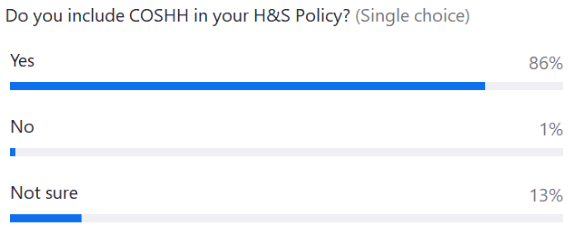
Case Study
The High Price of Poor Ventilation: A COSHH Wake-up Call
Summary: A 46-year-old school cook developed breathing problems after working with flour in the school kitchen. The room was small with poor ventilation and her breathing problems became so severe that she could hardly walk. She had to sleep sitting up. Her daily job included dough making in a large mixer. There were no controls for the flour dust
HSE investigation: The cook contacted her union, which supported her with a compensation claim on the basis that decent working conditions were not provided. The council admitted that it had not taken sufficient action over the problem despite repeated complaints. HSE was not involved.
Effects: The cook became severely asthmatic. She had to retire early on health grounds, and the courts eventually awarded her £200,000 in damages, but the money will not bring back her health. While she was able to move out of town, she rarely leaves the house. She faces a very restricted lifestyle. The dust produced whilst working with flour is a hazardous substance as defined under the COSHH Regulations.
What is COSHH and Where Does it Apply?
Control of Substances Hazardous to Health Regulations (COSHH) 2002
COSHH is a UK legislation that requires employers to protect their employees from exposure to dangerous substances. Employers must assess risks, implement control measures, and provide information and training to ensure staff are compliant with the handling of hazardous substances. (These regulations exclude Asbestos, Lead and Radiation risks as they are so dangerous, they have their own regulations.)
Hazardous substances could be fumes that you breathe in, liquids, gels or powders that come into contact with your eyes or skin. There could also be harmful micro-organisms present that can cause infection, an allergic reaction or are toxic.
We must remember that it doesn’t just apply to hazardous products that come in a bottle or aerosol can, it also includes substances, such as dust, that are produced from an activity such as wood dust in D&T or flour dust in the kitchen.
COSHH Regulations do not apply to generic illnesses that can be contracted in general society such as the common cold or the flu. It must be specific to the work activity and/or the workplace concerned.
To manage harmful substances, you need to start with a policy that identifies your legal remit, which staff and activities require COSHH management processes within your school.
Poll 2
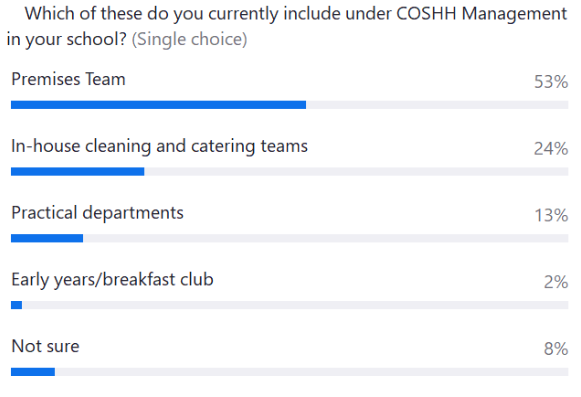
Who's Accountable? Mapping Staff Roles
The following characteristics can help you identify which staff are at risk of COSHH:
- Managing hazardous substances, they use directly at a local level.
- Staff who have management oversight to ensure all applicable staff are managing the risks appropriately.
- Non-employees who may be affected by your activities, e.g. members of the public, visitors or contractors who would be affected by dust, fumes, spilt substances etc.
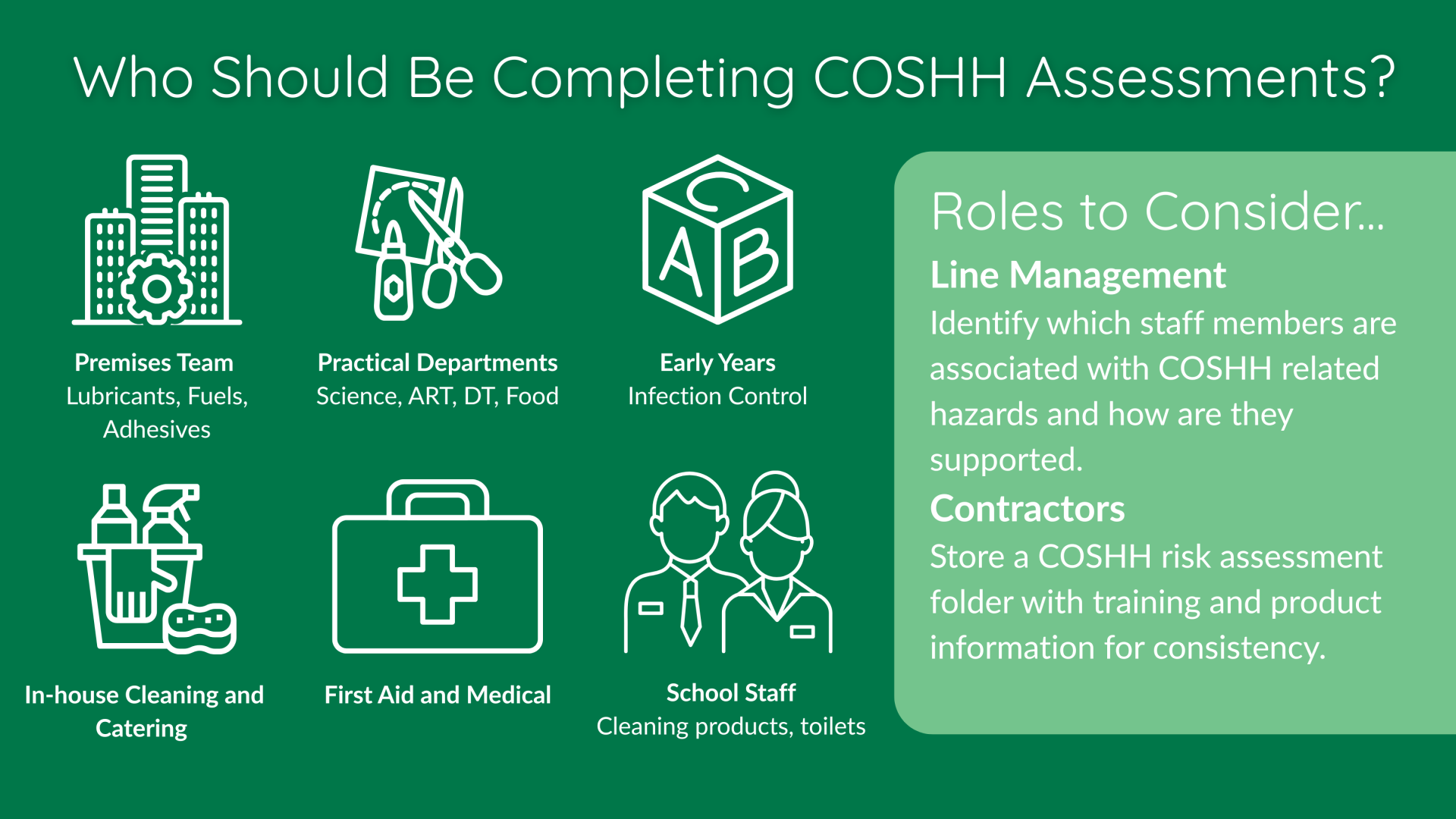
By identifying, allocating and defining staff roles and responsibilities for managing COSHH, you will also complete a Training Needs Assessment to identify who needs what level of training to be competent in their role.
Training can come in the form of e-learning modules for lower risk tasks or refresher training, face to face training courses for higher risk activities, e.g. premises staff/science/technology teams/in-house catering and cleaning teams.
Poll 3
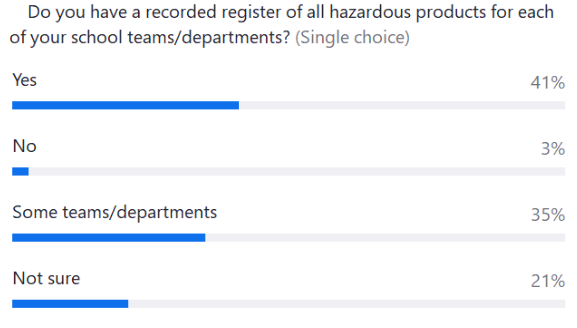
How Judicium Completes Assessments
What processes pose a hazard is essential to keep track of what your teams are managing.
Safety Data Sheets
(Used to be called MSDS): This is defined by a GB CLP Regs (Classification, labelling and packaging) by the red diamond symbols on the product label.
Tip– If it has one or more red diamond CLP symbols, a COSHH risk assessment is required.
Risk Assessments
Should be bespoke to the activity and product concerned. A COSSH risk assessment should be specific to the product or substance being assessed. You will use the generic information in the SDS to write a tailored, specific assessment of how your team will use the substance. This will include any individual requirements for team members such as allergy controls
How Do I Dispose Of It Safely Safe Data Sheets will define when a substance is safe to dispose of in a standard drain that are low risk/water soluble or through specialist waste services.
Dosing requirements for mixing, PPE provisions, ventilation requirements, maximum exposure times.
How Do I Store It Safely
Bunding requirements to catch leaks, identifying substances to be kept separate so they do not react with each other, correct containers, and appropriate materials of containers.
Key Takeaways on Ensuring COSHH in Schools
- Policy that identifies staff roles and responsibilities
- COSHH register of products/substances that is reviewed at least annually
- COSHH risk assessments are recorded, reviewed annually but split this job across the teams who wrote them and not all in one lump at the end of the year.
Judicium Education’s Health and Safety Advisory Service is designed to support schools, firstly, in ensuring a safe working and learning environment, secondly, in complying with the legal requirements imposed on them as employers under the various Health & Safety laws and regulations. For more information, please visit here.
If you require any support in any of these steps, or would like to talk to someone surrounding some support for your school please do not hesitate to call us on 0207 336 8403 or email enquiries@judicium.com.
The Health and Safety Service is also providing accredited training courses, including eLearning with specific modules ranging from courses designed for premises managers and SLT to all staff offerings and fire warden training: https://www.judiciumeducation.co.uk/elearning
We also offer live, exclusive training options: https://www.judiciumeducation.co.uk/training
To review Judicium’s forthcoming sofa sessions please click here.
Follow us on Twitter - @JudiciumEDU
© This content is the exclusive property of Judicium Education. The works are intended to provide an overview of the sofa session you attend and/or to be a learning aid to assist you and your school. However, any redistribution or reproduction of part or all of the contents in any form is prohibited. You may not, except with our express written permission, distribute or exploit the content. Failure to follow this guidance may result in Judicium either preventing you with access to our sessions and/or follow up content.
Related content
.png)
This blog is based on Judicium’s Health & Safety and SEND session on 26th November with resident expert India Cottenden
.png)
This blog is based on Judicium’s Food Safety Sofa session on 12th November with resident experts Sue Roberts and Tracey Killick

This blog is based on Judicium’s Health and Safety ‘Sofa Session’ on the 15th of October, with our resident expert Mike Wright.

This prestigious award celebrates our commitment to delivering expert, education-specific Health & Safety support that lifts the burden for school teams while raising safety standards across the sector.
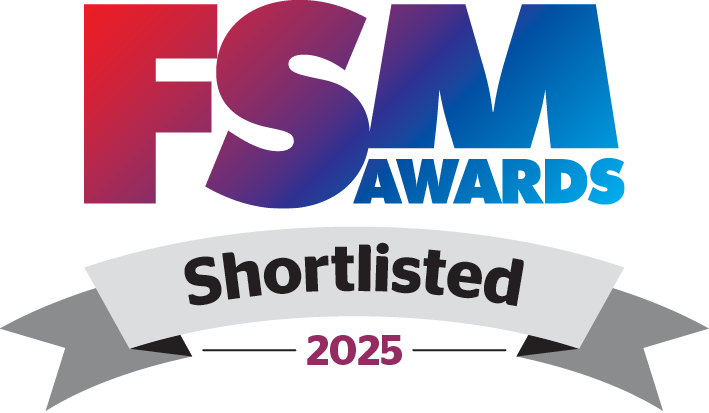
Discover why Judicium has been shortlisted for Fire Safety Consultancy of the Year at the 2025 FSM Awards, recognising our expert support for schools and trusts in delivering sector-specific, compliant, and practical fire safety solutions.
.png)
This blog is based on Judicium’s Health and Safety ‘Sofa Session’ from the 12th of March, with our resident expert Mike Wright.

Sofa Sessions | H&S